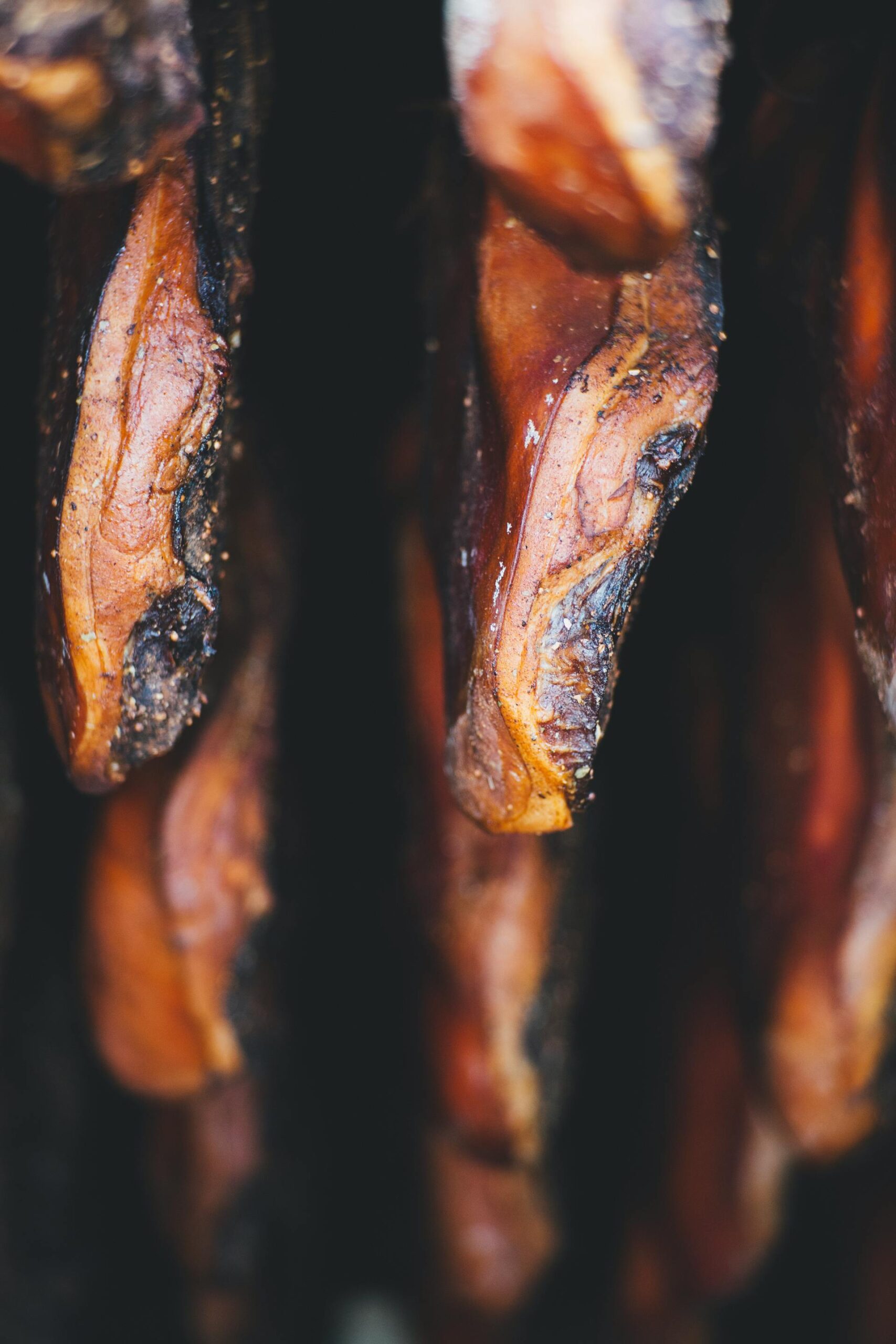
Introduction
Smoking meat is an ancient technique that enhances flavor and preserves food. The two primary methods—cold smoking and hot smoking—serve different purposes and yield unique results in the world of charcuterie.
What is Cold Smoking?
Cold smoking involves exposing meats to smoke at low temperatures (68–86°F) without fully cooking them. This method adds flavor without altering the meat’s raw texture. It’s often used for items like bacon, smoked salmon, and sausages.
- – Advantages: Cold smoking provides a rich, smoky flavor without cooking the meat. It’s perfect for charcuterie items that will later be cooked or consumed raw, such as prosciutto or smoked fish.
- – Disadvantages: Cold smoking can be risky if not done properly, as bacteria may grow if the meat is exposed to unsafe temperatures for too long.
What is Hot Smoking?
Hot smoking cooks the meat as it smokes, with temperatures ranging from 180–250°F. This method is ideal for meats that need to be fully cooked, such as brisket, ribs, or chicken.
- – Advantages: Hot smoking fully cooks the meat, making it safe to eat right away. The process also produces a tender, flavorful result due to the slow cooking.
- – Disadvantages: Since the meat is cooked, it doesn’t last as long as cold-smoked meats and may not have as intense a smoky flavor.
Which Should You Choose?
- – Cold smoking is ideal for delicate meats and those meant to be eaten raw or lightly cooked. It’s also perfect for extending shelf life.
- – Hot smoking works best for meats that need to be cooked and are ready to serve immediately, such as brisket or pork shoulder.
Conclusion
Choosing between cold smoking and hot smoking depends on your desired result. Cold smoking delivers intense flavors without cooking the meat, while hot smoking combines flavor and cooking in one process, resulting in tender, ready-to-eat charcuterie.




